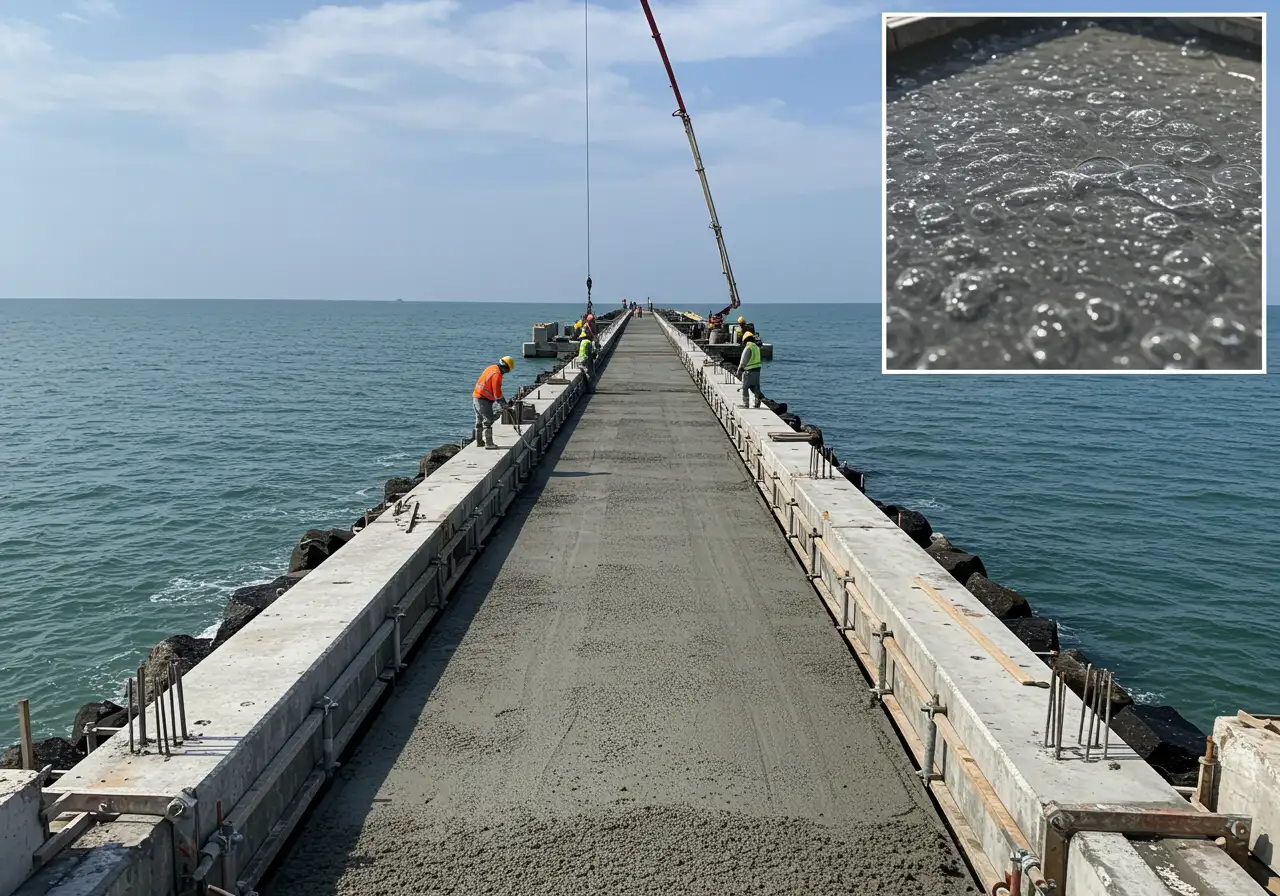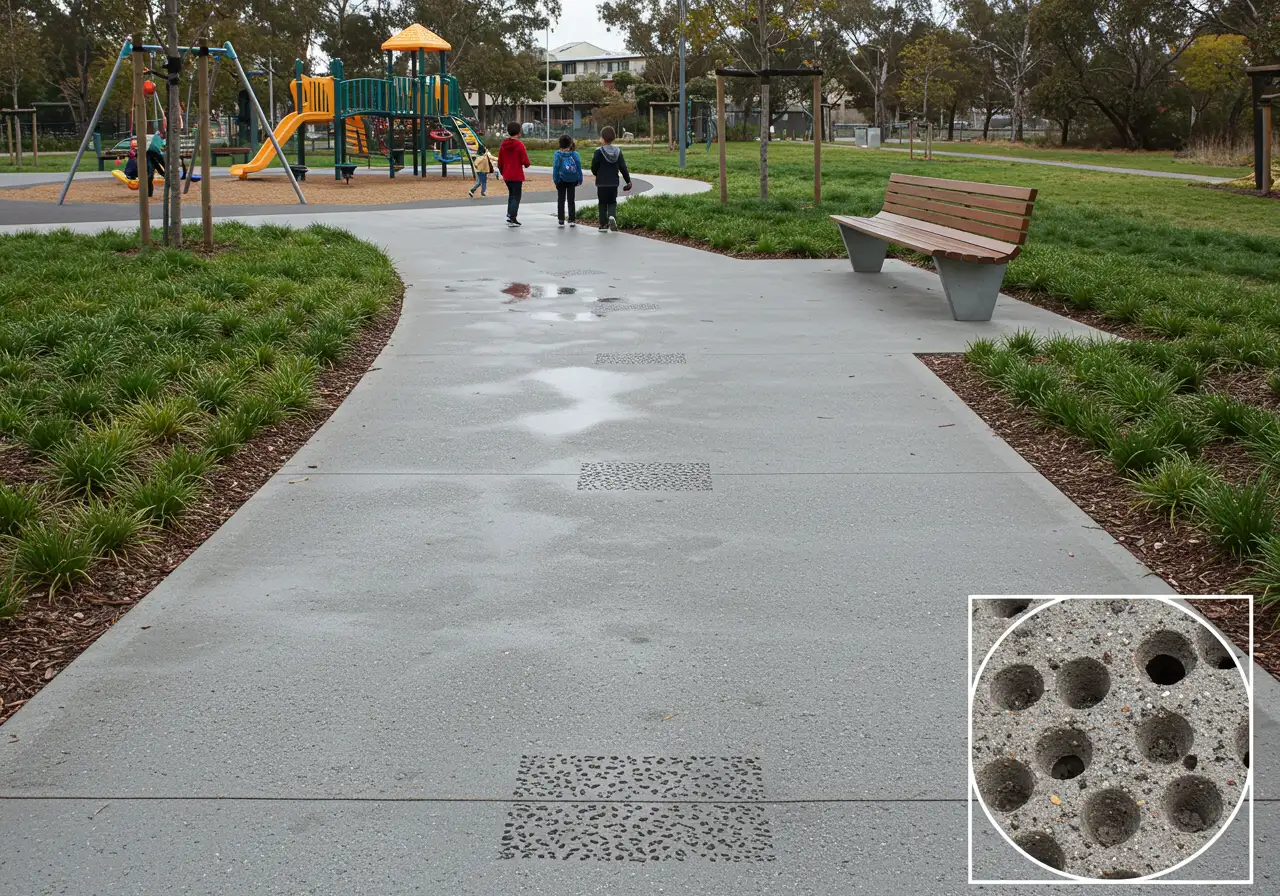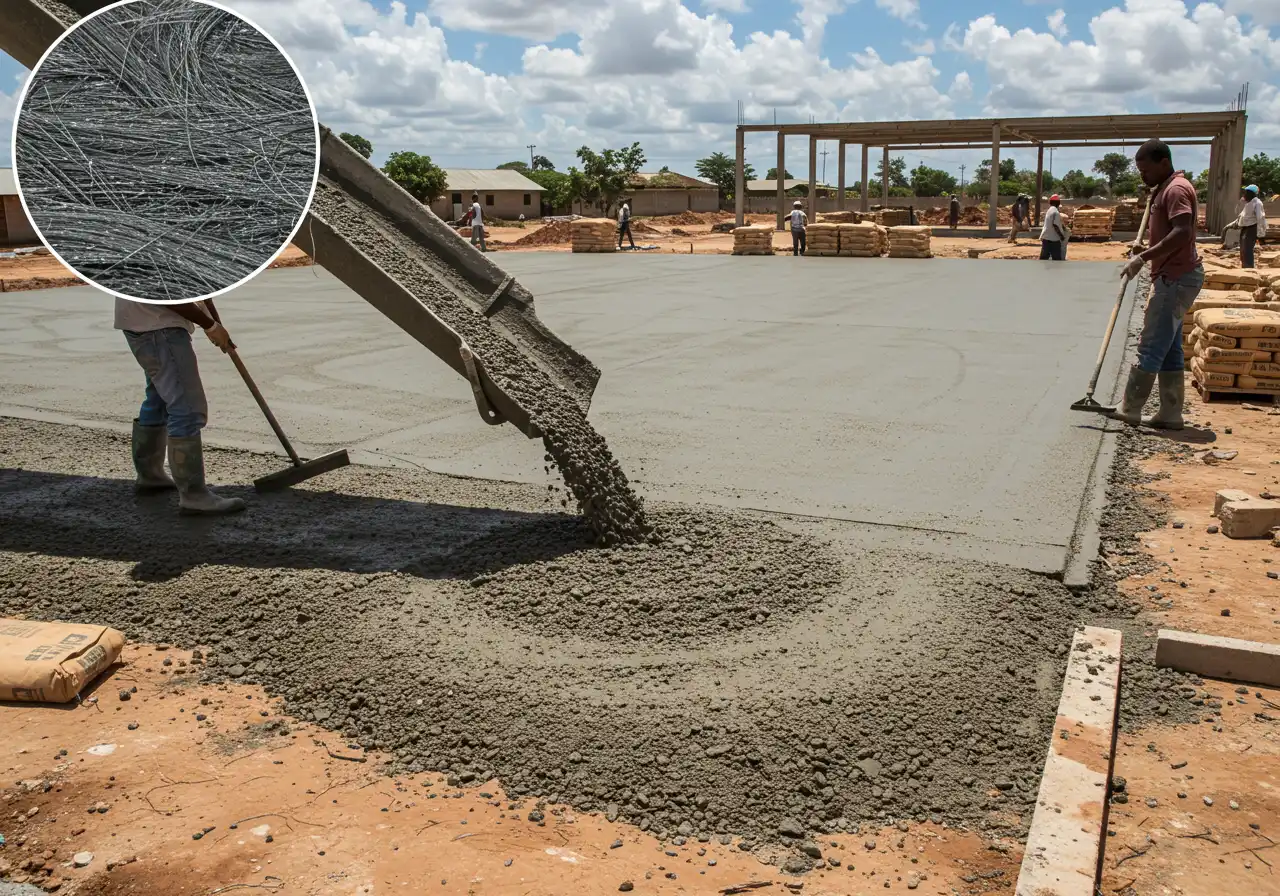Bamburi Cement Ultra-series Concrete
Bamburi Cement Ultra-series Concrete
Cutting-Edge Solutions to Modern Construction
Advantages
1. Ultra-waterproof concrete
Contains latest pore-blocking waterproofing technology
Bamburi Ultra-Waterproof Concrete is specially formulated to contain the latest pore-blocking waterproofing technology. This makes it an ideal solution for concrete applications exposed to water and moisture.
Bamburi Ultra-Waterproof Concrete also conforms to additional requirements on waterproofing. It conforms to EN 12390 8:2009 Depth of Penetration of Water under Pressure, EN 206-1:2013 and KS EAS 131-1:2008.
- Offers superior and economic waterproofing solution
- Extremely effective against hydrostatic pressure
Bamburi Ultra-Waterproof Concrete is typically used in concrete applications exposed to moisture. These include:
- Water retaining structures (pools, aquariums, reservoirs, dams)
- Below grade concrete works (basements, cellars, retaining walls, etc)
- Flat roofs, podium slabs, parking structures
- Water treatment plants
- Tunnels and subway systems and subway systems
- Bridge works
- Marine structures
- Stadiums
- Waste water treatment plants

2. Ultra-self Compacting Concrete
Flows under its own weight
Bamburi Ultra-Self Compacting Concrete (Ultra-SCC) is a uniquely formulated
concrete that has the ability to flow under its own weight, effectively filling a
form area and achieving full compaction on its own without vibration. Bamburi
Ultra-SCC Conforms t o BSEN 206, Constituent Materials o f SCC, Specifications, and Conformity Criteria a n d European Guidelines for Self-Compacting Concrete: Specification, Production and Use.
Characteristics and Properties
- Flowability – ease of flow of fresh Ultra-SCC when unconfined by formwork and/or reinforcement
- Viscosity – resistance to fl o w of fresh SCC once flow has commenced
Passing ability – ability of the fresh concrete to flow through tight openings such a s spaces between rebar reinforcement without segregating or blocking - Segregation resistance – ability o f the SCC t o remain homogenous while in its fresh state
Bamburi’s Ultra-SCC importance i s that i t maintains designed concrete strength, durability and other engineering properties while meeting other desired performance requirements.
- Faster placement of concrete with n o vibration or mechanical compaction
- Cost effective due t o reduced labour requirements a n d equipment on site.
- Shorter construction periods – allows for acceleration o f project schedule resulting i n cost savings
- Produces superior and more uniform surface finishes
- Enhanced strength due t o superior compaction and uniformity of concrete
- Minimizes voids on highly reinforced areas by easily flowing around the congested steel
- Allows for innovative architectural features due t o ability to flow into complex forms
- Allows for easier and faster pumping
- Improved tolerances (levels) of floors and slabs
- Elimination of vibrator noise potentially increasing construction hours in urban areas
The innovative concrete design technology of Bamburi Ultra-SCC to enhance
both Fluidity (flow ability) and Stability (non-segregation) enables this product to suit several worksite applications including but not limited to the following:
- Structures with heavily reinforced sections/elements
- Areas/sections with difficulty in access such a s underwater concrete, sections with complex shapes, thin sections etc.
- Horizontal applications with large coverage requiring high level o f flatness (high tolerance floors)
- Retaining walls
- Construction of raft a n d pile foundations
- Thin walls and column sections which would traditionally be classified as ‘slow jobs’
- Sections with complex Architectural Designs and formwork
- Mass concrete foundations e.g. Raft foundations
- Jobs requiring rapid demoulding/early formwork strike-off (Removal o f props subject to engineer’s approval)
- Grade o f concrete: 2 5 MPa minimum.
- Cement type: Bamburi cement 32.5, 42.5, 52.5.
- Aggregate size: 20 mm maximum aggregate size (MAS) and 10 mm MAS mixed with sand. (Note: Client t o confirm requirements b a s e d on size of thinnest
section) - Workability: Collapse and flow
Note that the standard practices and good procedures in concrete placing and curing must be strictly adhered to with proper curing procedures as required by normal concrete mixes.
In addition t o this, the following additional points need to be considered when working with Bamburi Ultra-SCC:
- Formwork should be desigened to withstand the fluid concrete pressure that will be higher than that o f normal concrete
- Formwork should b e placed to have airtight joints t o prevent paste loss.
- Ultra-SCC will have t o be placed in lifts for taller elements
Characteristics of Bamburi ultra-self compacting Concrete
Bamburi Ultra-SCC is designed to satisfy the following properties and requirements as outlined in the referenced standard and guideline.
| Property | Criteria |
|---|---|
| Slump-flow class SF1 | ≥ 550mm, ≤ 650mm |
| Slump-flow class SF2 | ≥ 660mm, ≤ 750mm |
| Slump-flow class SF3 | ≥ 760mm, ≤ 850mm |
| V-funnel Class VF1 | < 9s |
| V-funnel Class VF2 | ≥ 9s, ≤ 25s |
| L-box Class PA1 | ≥ 0.80 (with 2 bars) |
| L-box Class PA2 | ≥ 0.80 (with 3 bars) |
| Sieve segregation Resistance Class SR1 | ≤ 20% |
| Sieve segregation Resistance Class SR2 | ≤ 15% |
3. Pervious Concrete
Surface and Storm Water Management
Bamburi Pervious Concrete is an ideal solution for surface and storm water management. Typically containing 20-35% void space, it allows water to penetrate through at a permeability of 150 – 1000l/min/m2.
- Residential roads and parking lots (maximum load 7.5T)
- Pavements, bike and pedestrian pathways
- Patios
- Tennis Courts
- Alleyways
- Pavement edge drains etc.
- Faster Draining
- Smooth clean look
- Easy to place with a paver
- Available with integral colour
- Can form part of a cost-effective Sustainable Urban Drainage System (SUDS)
- Mitigates contamination of groundwater b y s u r f a c e pollutants
- Unit weight i s u p t o 70% less than conventional concrete
- Can retain workability for upto 90 minutes
- Compressive strength b e t w e e n 10-20MPa
- Excellent permeability a t a rate of 150-1000 l/min/m2
- Reduces Glare from wet pavements
- Reduces the concentration time of running water
- Eliminates water accumulation due to rain
The standard rules for good concrete practice must be strictly observed with proper curing procedures as required by normal concrete mixes but more
rapidly implemented.
There are three factors that determine pervious pavement system design thickness:
- Hydraulic properties such as permeability (related to yearly average rainfall) and volume voids (related to the rate of water discharge).
- Structural properties such as compressive strength, which offer better load-bearing properties.
- Selection of appropriate Pervious Concrete properties depends on the more dominant factor between:
- Hydrological requirements
- Load-bearing requirements
The larger of these values governs the design thickness.
- Rapid drying requires specialist handling and curing.
- Concrete transfer can be done either off the truck or using a concrete conveyor. Pumping is not applicable.
- Concrete workability retention lasts up to 90 minutes.
- Placement should be continuous and rapid.
- Can be paver laid.
- Reduce overworking the concrete, especially after striking off and finishing.
- Use recommended placement methods.
- Compact with a steel roller, vibrating plates, or pavers to the height of the forms.
- Hand tamp near edges and other areas not reached.
- Complete compaction within 15 minutes of placement.
- No floating or troweling.
- Minimize overworking or movement of the surface after compaction. This includes walking on the surface.
- Contact our technical representative for further information.
- It is recommended to place joints immediately after compaction. Otherwise, saw cuts are possible after 7 days of curing.
- Minimal maintenance required.
- Design the site to minimize the flow of soil and leaves to the pavement.
- Vacuum annually or when a clogging test indicates the necessity.
- Alternatively, try pressure washing.

4. Ultra-fibre Reinforced Concrete
Concrete that slows crack propagation
Bamburi Ultra-fibre Reinforced Concrete consists of either steel or polypropylene micro and macro-fibres. The fibres turns concrete into a composite material that slows crack propagation and reduces plastic and drying shrinkage cracking.
Main areas of application are:
- Driveways
- Concrete pavements
- Floors (Industrial, Commercial or domestic)
- Precast Elements
- Cold room floors
- Very thin sections with large surface-to-thickness ratios
- Any other concrete application where enhanced properties are required
- Composite decks
- Shotcrete (microfibres)
- Provides homogenous reinforcing, reducing the possibility of spalling of concrete edges.
- Reduces labour required to place the handle plastic shrinkage control mesh (BRC) when used as a substitute for floor slabs
- Improves the wet mix by reducing the potential for concrete segregation
- Reduces the overall bleed and consequential settlement cracking
- Inhibits early shrinkage cracking
- Increases the cohesiveness of concrete
- Macro-synthetics fibres provide crack control without the risk of corrosion
- When used in shotcrete applications, they provide increased adhesion hence less rebound and waste and ability to pass thicker layers of shotcrete in one pass
Bamburi Ultra-fibre Reinforced Concrete does not replace any structural steel reinforcing.
Steel or Polypropylene fibres are added to the concrete mixing drum during the batching process of the raw materials. Dependent on the predetermined concrete mix design, there are different dosage rates used, subject to targeted concrete performance.
Slump: The slump of the concrete will be reduced. This does not however indicate a reduction in workability. The reason for the reduced slump is that the fibres create a desirable thixotropic effect, which will affect a static test such as that for the slump test. Energizing concrete with a vibrator will overcome the apparent slump loss.
Bleed: Settlement of concrete is reduced as a result of a reduction in bleed water. Tests on Micro fibre concrete show a reduction in bleeding. Settling occurs when the concrete changes from a plastic to solid material. During this process, the concrete is particularly prone to cracking.
- They constantly redirect micro crakcs each time a fibre filament is encountered and hence drastically reduce the potential for plastic shrinkage cracking.
- Bleed water is reduced, which reduces the development of capillary pores associated with bleed water. This reduction of pores decreases absorption properties and hence increases sustainability.
- Provides greater impact resistance. Impact damage is common in concrete, particularly at the surface and edges of elements and saw cuts. Micro-fribres reduce the spalling of concrete by providing secondary reinforcement.
- Enhances abrasion resistance. As micro-fibres control bleed water migration, the possibility of the fine cement and sand particles segregating from the mix is drastically reduced. This promotes an efficient hydration of cement which improves the bonding of the cement matrix and achieves a tougher more durable concrete surface.
Micro-Fibres (Polypropylene)
- Improves flexural toughness – limit the widening of cracks after they have formed
- Can improve Tensile strength
- Can eliminate the need of welded-wire (BRC Mesh) reinforcement depending on the application
- Effective crack control
Steel Fibres
- Steel fibre-reinforcement concrete distributes localized stresses
- Reduction in maintenance and repair cost
- Provides tough and durable surfaces
- Resistance to impact
- Improves toughness by preventing crack propagation from micro-crakcs to macro-cracks
- Bamburi Ultra-Fibre Reinforced Concrete is produced in conformance to both local and international standards i.e KS EAS, BS EN, etc.
- Cement combinations conforming to BS EN 197
- Aggregates conforming to BS EN 12620
- Special high performance dispersants conforming to BS 14889
The standard rules for good concrete practice and placing must be strictly observed with proper curing procedures as required by normal concrete mixes.


Customer Support
At Bamburi Group, we are committed to providing exceptional customer support to ensure your construction projects run smoothly. Reach out to us via phone or email for expert support you can rely on.